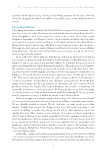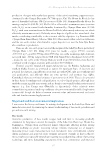Lake Eyre Basin Rivers 236 and Kingsford 2011). There also needs to be adequate assessment of the costs and benefits to economic environmental values of the Lake Eyre Basin, relative to the benefits of development (see Chapter 18). This includes direct costs to less ephemeral, stable industries, such as livestock grazing and tourism. Socio-economic analyses should also expose the largely invisible subsidies that underpin many large irrigation developments and extend over decades, as well as incorporate the long-term costs of rehabilitation. Inevitably, this discussion sidesteps the consequences of ‘sleeper’ licence activation and the development of unallocated water in the Cooper Creek and Georgina–Diamantina catchments. Although there are considerable financial impediments to development (e.g. costs of infrastructure development, limitations of water access, proximity to markets and transport costs), the possibility remains that these licences may one day become activated when economic conditions are favourable. If the maxim for human health that ‘prevention is better than the cure’ is equally applicable to the environment, there remains a good case to resume the sleeper licences and remove unallocated water from the Queensland water plans in the Lake Eyre Basin, recognising and protecting its outstanding values. This would require compensation for irrigation licences, provided either by governments to current users, or through the purchase of licences by a third party (e.g. a non-government organisation), coupled with agreements that would prevent future development of the river basin. One criticism of this approach is that ‘closing-off’ such a river basin to water resource development abrogates our local, regional and global responsibility to provide for the food and fibre needs of the world. It is time that governments focus more on the demand side of the equation for food and fibre and improve the efficiency of existing water developments and systems in order to increase production. This includes the potential for urban centres, consumers of most food and fibre, to also engage in agricultural production within their footprint (Barthel and Isendahl 2013). Critically, the current policy instruments preventing construction of large off-river storages, increases in pump size or volume on floodplains are the most important barrier to rapid large scale development of irrigation and must remain in place. Of the other threats to the sustainability of the rivers of the Lake Eyre Basin, climate change is potentially the most significant, although current understanding of the effects will depend on knowledge of changes to rainfall patterns and temperature. Temperature is increasing (Reisinger et al. 2014), which will mean increasing evaporation, partly offset by increasing rainfall (Greenville et al. 2012). Communities and governments should continue to develop policies that limit greenhouse gas emissions and stabilise temperatures. At a local scale, there may be a need for active policies to enhance the persistence of key refuge waterholes, with significant biodiversity value. Solutions to avoid pollution disasters, such as spillage from Lady Annie copper mine (see Chapter 19), must involve rigorous assessment of the proximity of such mines to rivers and the risk of pollution. Further, if development proceeds, a realistic bond which adequately provides for restoration, must be negotiated. Ubiquitous plant and animal invaders continue to wreak damage to industries and the ecosystems. Although there is generally a strong commitment to mitigating their impacts, levels of accountability and measurements of success or failure are often inadequate. Systems of strategic adaptive management can provide a more transparent and rigorous framework
Downloaded from CSIRO with access from at 216.73.216.131 on Nov 21, 2025, 3:38 AM. (c) CSIRO Publishing

















































































































































































































































































